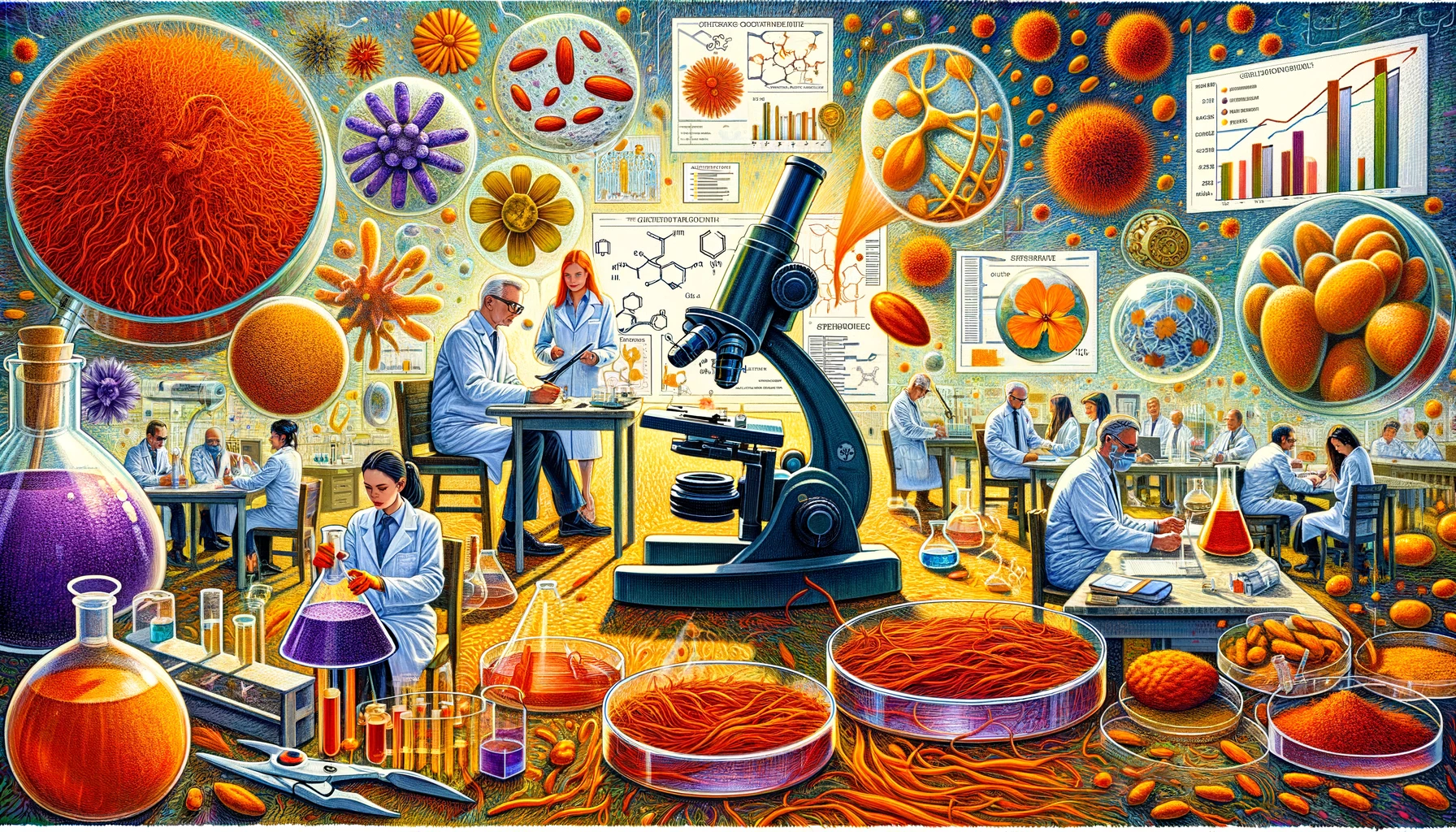Saffron, traditionally known for its use in cooking and medicine, has become a subject of interest in the scientific community. Recent research and discoveries have begun to unravel the numerous potential benefits of this golden spice, shedding light on its various applications in health, nutrition, and even technology. This article delves into the latest scientific findings related to saffron, exploring how this ancient spice is making waves in the modern world.
One of the most exciting areas of saffron research is its impact on mental health. Numerous studies have investigated saffron’s potential as an antidepressant and mood enhancer. Research suggests that saffron may have comparable effects to certain conventional antidepressants, making it a potential natural alternative for managing depression. Studies also indicate that it might help in reducing symptoms of anxiety and improving overall mood.

Saffron’s potential benefits extend to neuroprotection and cognitive enhancement. Recent research has explored its protective effects against neurodegenerative diseases such as Alzheimer’s and Parkinson’s. The spice’s antioxidant and anti-inflammatory properties may help in slowing down the progression of these diseases and improving cognitive function. This has significant implications for aging populations and the pursuit of treatments for neurodegenerative conditions.
In the realm of eye health, saffron has shown promise in improving vision and protecting against eye diseases. Studies have found that saffron may improve visual acuity and protect the eyes from damage caused by bright light. It is being researched as a potential treatment for age-related macular degeneration, a leading cause of blindness in older adults.
Saffron’s anticancer properties are another area of active research. Scientists are investigating the spice’s compounds, such as crocin, crocetin, and safranal, for their ability to inhibit the growth of cancer cells and induce cell death. While research is still in the early stages, preliminary findings suggest that saffron could be a valuable addition to cancer treatment and prevention strategies.
In addition to health-related research, saffron is also making its mark in technological and industrial applications. Innovations include using saffron extracts in photovoltaic cells to improve solar panel efficiency and incorporating saffron in biodegradable packaging materials. These developments not only highlight saffron’s versatility but also contribute to more sustainable and eco-friendly technologies.
Despite its promising potential, research on saffron is not without challenges. The high cost and labor-intensive process of harvesting saffron make it a valuable yet scarce resource. Ensuring the quality and purity of saffron is crucial in research, as adulteration can affect the outcomes of scientific studies. Moreover, much of the research is still in the early stages, and more extensive clinical trials are needed to confirm saffron’s effectiveness and safety in various applications.
In conclusion, the intersection of saffron and science is an exciting field, offering new insights into this ancient spice’s potential. As scientific research continues to uncover the mysteries of saffron, we can anticipate more innovative applications and a deeper understanding of its benefits. From mental health and neuroprotection to cancer treatment and technological innovations, saffron stands as a testament to the enduring quest for knowledge and the potential of natural substances in advancing human well-being and technology.

